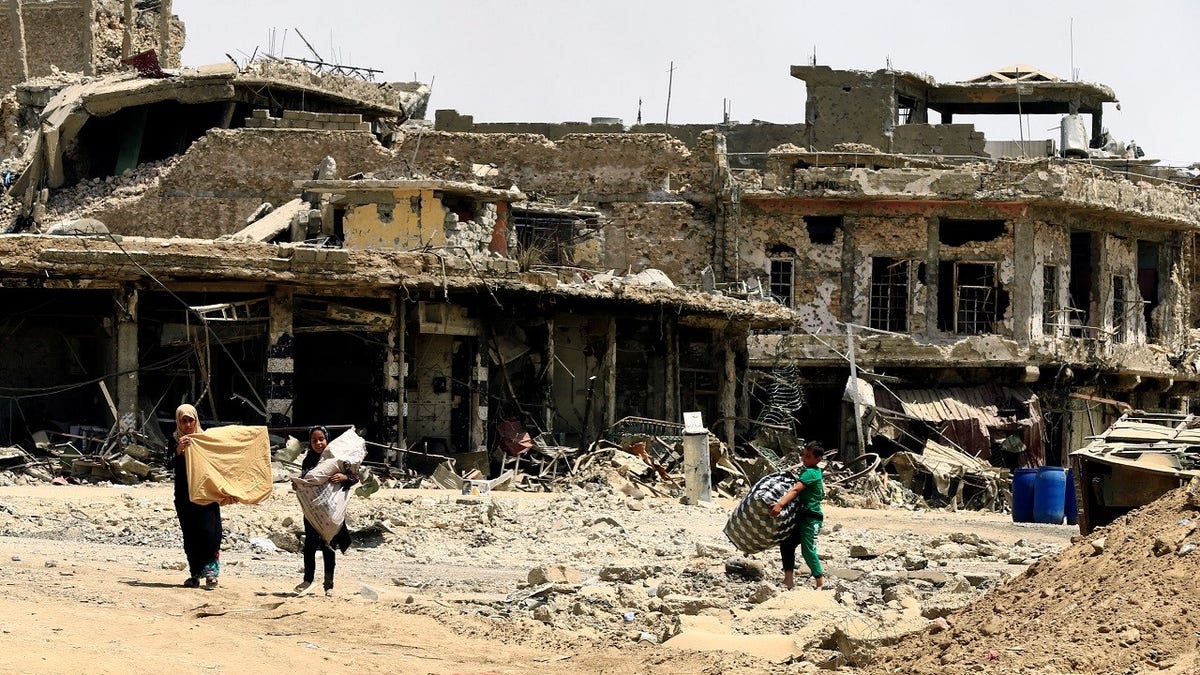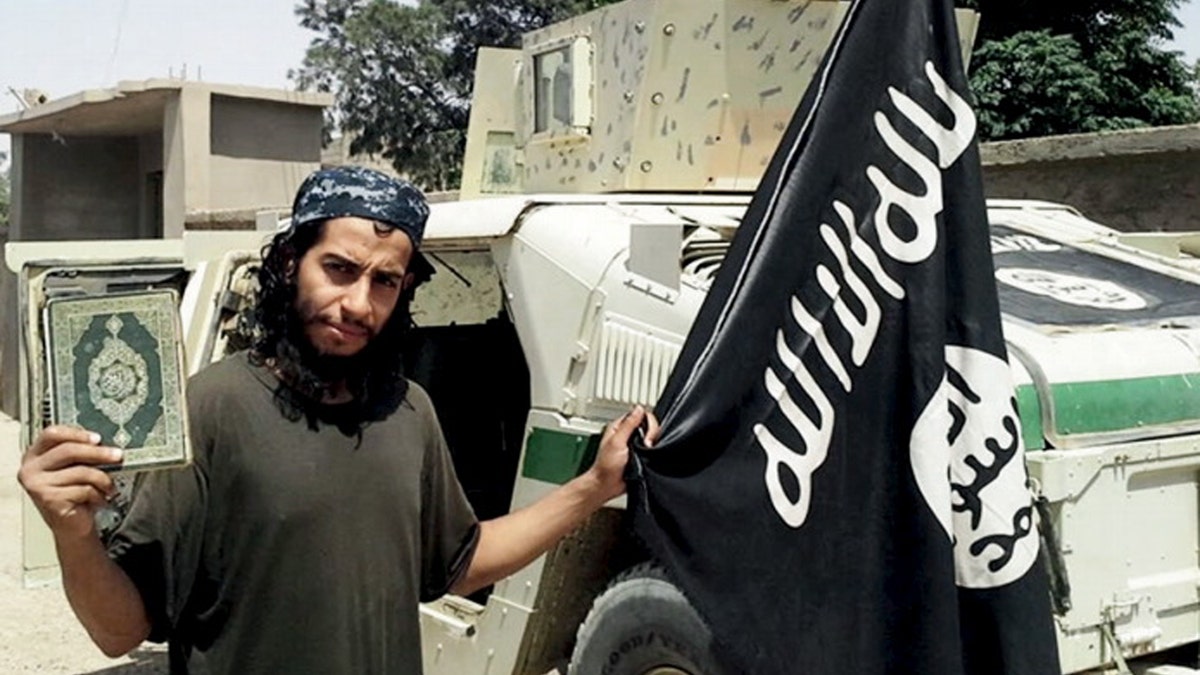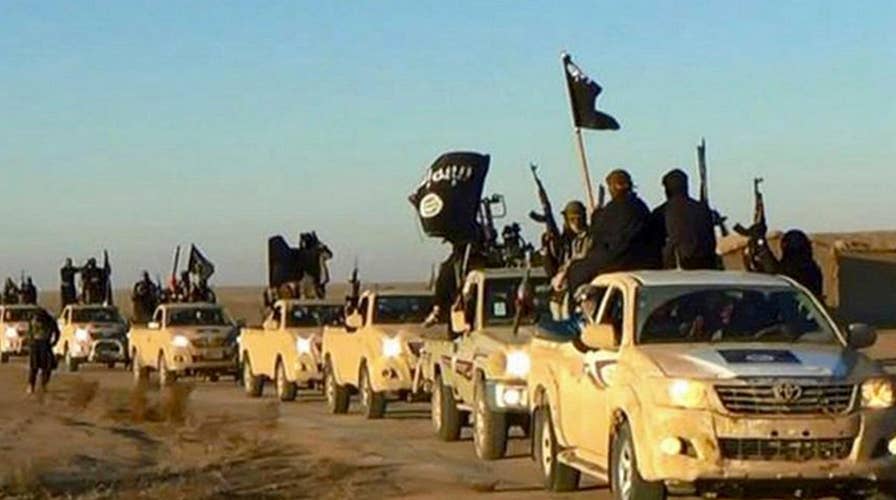Report: US takes out top ISIS recruiter
'White Widow' Sally Jones reportedly killed in U.S. drone strike; Trace Gallagher reports from Los Angeles.
When it came to recruiting foreigners to flee the comforts of home for the battlefields of Iraq and Syria, ISIS succeeded like no other — encouraging more than 40,000 fighters from more than 110 countries to travel to the fighting fray both before and after the declaration of the “caliphate” in June 2014. Subsequently, authorities have warned about the threat of returning jihadists to their homeland and since the falls of Mosul, Raqqa and the rapidly receding footprint of ISIS, such fears have come to the forefront.
According to a new report, “Beyond the Caliphate: Foreign Fighters and the Threat of Returnees,” released this week by the Soufan Center — a Washington-based security intelligence consultancy — there are now at least 5,600 citizens or residents from 33 countries who have returned home — accounting for about 15 percent of the fighters.

FILE - In this file picture taken on Friday, July 21, 2017, Kurdish soldiers from the Anti-Terrorism Units, carry a blindfolded an Indonesian man suspected of Islamic State membership, at a security center, in Kobani, Syria. Western governments have tacitly handed down guidance to the forces uprooting the remnants of Islamic State in Raqqa and beyond on how to handle their citizens who joined the extremist group by the thousands. (AP Photo/Hussein Malla, File) (Copyright 2017 The Associated Press. All rights reserved.)
The report asserts that for the United States, 129 fighters succeeded in leaving the country and only seven have returned.
Of the 5,000 residents of the European Union who flocked to Iraq and Syria, a quarter are alleged to have returned home. But in the U.K., that figure was closer to half, with some 425 of the 850 fighters who left Britain to join the self-styled caliphate back on home soil. Around 5,000 left from Central Asia, of which just 500 — 10 percent — too have returned.
The countries with the highest number of foreign fighters included Jordan at 3,000 (around 250 returned), France at 1,910 with 271 back and Morocco at 1,623 with 198 having gone home. Meanwhile, 400 of Russia’s 3,417 fighters are estimated to be back on their native soil, 147 of the 1,300 Tajikistan fighters, 800 of Tunisia’s 2,926, none of the 1,200 from Uyghurs — in China's western Xinjiang region — have returned and none of the 1,500 from Uzbekistan are believed to have crossed back into their mothership.

The Old City of Mosul in the final days before ISIS defeat in July, 2017. (REUTERS/Thaier Al-Sudani)
“This is only what we know and what official records report. What about those that are still transiting illegally and freely across borders,” Lee Oughton, security expert and global business development director of international risk management firm, the Abbey Grey Group, observed. “The borders going into the U.S. are seen as porous and could be an ideal spot for returning ISIS fighters to filter undetected back into society.”
BRITS WHO RISKED THEIR LIVES TO FIGHT ISIS SAY THEY RETURN HOME ONLY TO BE ACCUSED OF TERRORISM

An undated photograph of a man described as Abdelhamid Abaaoud that was published in the Islamic State's online magazine Dabiq and posted on a social media website. A Belgian national in Syria and was believed to be one of Islamic State's most active operators is suspected of being behind attacks in Paris (REUTERS)
In 2015, the U.S. government estimated that roughly one in five of the aspiring American foreign fighters had been killed in the theater of war. But to-date, there are no precise numbers of how many were killed abroad and how many may have evaded into other countries to continue their cause — leaving the whereabouts of many unknown, with the potential of rebounding stateside.
The Soufan report also points out that a group which falls outside the definition of “returnee” figures are those people who have been stopped on their way to Syria or Iraq, either by their own authorities or those in a transit country.
“The members of this group will pose a particular problem as they had geared themselves up to join the caliphate only to be frustrated,” the report noted. “They will have all the fire and enthusiasm of a new recruit but none of the dampening experience of real life and death in the caliphate.”
REBUILDING RAQQA: SHOULD U.S TAXPAYERS PAY TO REBUILD THE RUINED FORMER ISIS STRONGHOLD?
A spokesperson for the FBI acknowledged to Fox News that “tracking those overseas who have fought on the battlefield is difficult,” and that they do not have firm numbers of “how many surrendered, were killed or remain unaccounted for,” but said that 300 Americans have “traveled or attempted to travel to Syria and Iraq to participate in the conflict” — which includes those who have joined other armed groups, such as the U.S.-backed YPG, Peshmerga or Free Syrian Army.
“While this number is lower in comparison to many of our international partners, we closely analyze and assess the influence groups like ISIS have on individuals located in the United States, who are inspired to commit acts of violence,” the official said. “Our number one priority is protecting the United States and our interests from terrorist attacks.”
“Of the approximate 300 U.S. fighters, according to counterterrorism statistics, approximately 40 died after traveling to Iraq or Syria, and that there is “only one known instance of a fighter returning from Syria to the U.S. and allegedly plotting an attack.”
Still, some analysts have expressed concern.

This undated image posted on a militant website is said by his parents to be British teen Talha Asmal. Family of the 17 year-old who reportedly killed himself in a suicide bombing in Iraq say they are devastated by his death.
“America does not strip the citizenship of those who join ISIS, so we can’t prevent them from coming home,” said national security expert Ryan Mauro, from the Clarion Project. “A lot of these returning ISIS recruits are likely disillusioned with the caliphate, but we must not mistake disappointment with a rejection of jihadist thinking overall.”
HOW TO SUCCESSFULLY SUE ISIS, HEZBOLLAH OR THE REGIMES OF IRAN, SYRIA AND NORTH KOREA

In this undated image posted online and made available on Thursday, Nov. 20, 2014, by Raqqa Is Being Slaughtered Silently, an anti-Islamic State group organization, a child wearing a hat with the Islamic State group logo poses with a weapon in Raqqa, Syria. (AP/Raqqa Is Being Slaughtered Silently)
Furthermore, the report concluded that since 2015, there “was a marked rise in the number of foreign women traveling to or, in the case of children, being born in the Islamic State,” which poses a particular problem. More than 15,000 women and children are documented to be part of ISIS — with at least 4,000 of them from the European Union, 3,417 from Russia, 3,000 from Tunisia, 1,623 from Morocco and 850 from the United Kingdom.
“Returning ISIS women is a complicated issue as many joined the fight willingly and engaged both in combat and effective recruitment of militants. Through careful assessment, those who fought willingly should be treated accordingly, along with their male counterparts,” surmised Tony Schiena, CEO of intelligence and security firm MOSIAC. “As far as indoctrinated children, they need to be placed in well-monitored de-radicalization and psychological programs and closely monitored until there is very little doubt of potential threat to civilians.”





















